Köfte is one of the most famous, easy to find, and relatively affordable Turkish foods in the country, including Istanbul. It is also tasty and suitable for many palates. As a meat and seasoned food lover, köfte always comes as one of the top Turkish foods I would willingly eat any day. Many foreigners (or perhaps only I) simply define or know Turkish köfte as a patty-like meatball dish grilled during mangal time and eaten with white bread.
Later I realized that I have been eating some menus in different restaurants and cities named köfte which have completely different taste, shape, and even ingredients. After a bit of browsing, I discovered that köfte is actually a meatball dish made of minced meat mixed with seasonings and onion. It is found in many regions from South Asian to Balkan areas. Turkey alone has 291 kinds of köfte. All the köfte I compiled below are only a few variants of Turkish köfte I have eaten and will definitely recommend you to munch on.
İçli Köfte
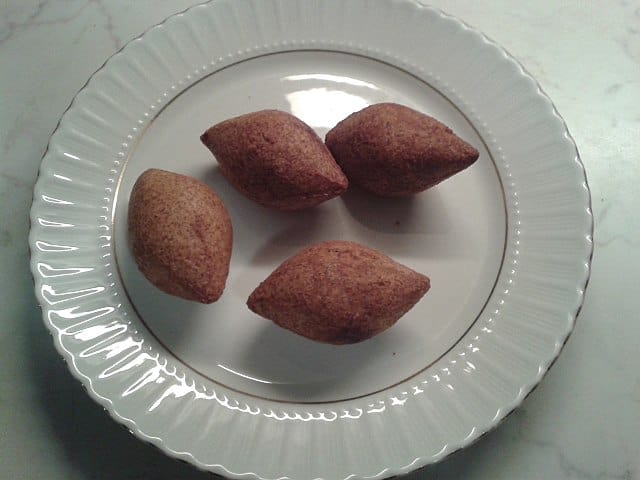
Fried food never lies, it always has that distinct goodness and temptation to break your commitment of eating only healthy, non-fat food. But whatever, this fried meze made of bulgur, ground meat, minced onion stuffed with more ground meat seasoned with cinnamon, nutmeg, clove, and other herbs is just something you should try at least once in your life time. Usually içli köfte is sold per piece in Gaziantep, Adana, or Hatay restaurants all over the country, but it is also often found as part of the menus in many Balkan restaurants and various eateries.
Çiğ Köfte
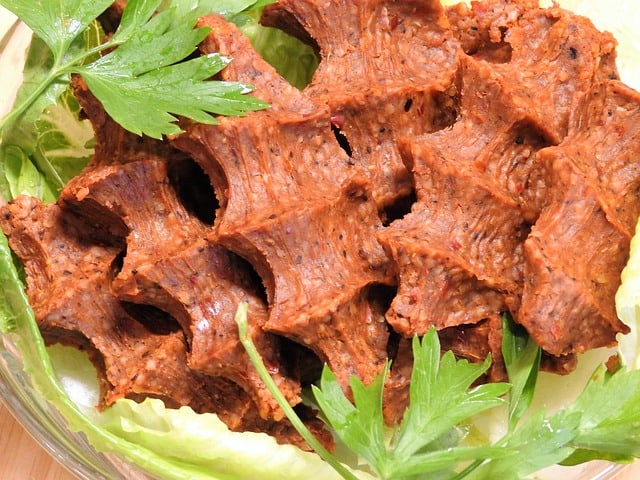
As someone who comes from Indonesia, a country with Spice Island, I had a different opinion compared to my European friends about Turkish food. Although the food was different and exceptionally good, it was not until I found çiğ köfte that I felt so lucky coming to Istanbul. Çiğ köfte is a product of Şanlıurfa cuisine, a province in South-eastern Turkey, and some other nearby provinces. There are two kinds of çiğ köfte, with and without meat. The basic ingredients usually consist of bulgur, raw meat (for the meat-based çiğ köfte), onions, scallions, parsley, Urfa pepper, olive oil, and salça (Turkish sun-dried tomato sauce), but different ingredients and spices might be used in different areas.
The dish is served with juice of lemon, lettuce, parsley, and sometimes slices of tomato where you can wrap them together with lavaş (pita bread). The dish also comes with pomegranate sauce for sour kick and chili sauce for a spicier sensation. Normally accompanied with ayran, çiğ köfte is eaten as meze, appetizer or even late night snack (that’s how I eat it!).
İnegöl Köftesi
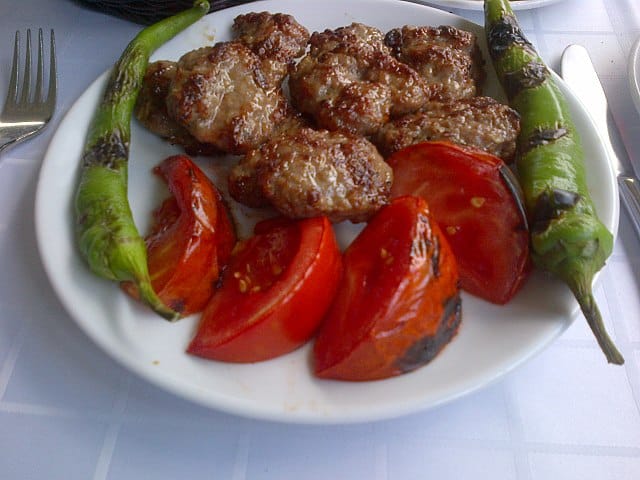
This particular köfte is, as the name suggests, originated from İnegöl, a district of Bursa. It is said that İnegöl köftesi was created by a Turkish person from the Balkans in the 19th century. This köfte is made of minced lamb, onion, salt, and sodium bicarbonate in specific proportion. The mixture is kneaded, left in the fridge for around 3 hours, and cooked on a grill. One distinct characteristic of İnegöl köftesi is that the meat mixture does not have any seasonings and it weighs about 12 grams. Unlike içli köfte and çiğ köfte that are classified as starters, İnegöl köftesi is a main course.
Akçaabat Köftesi
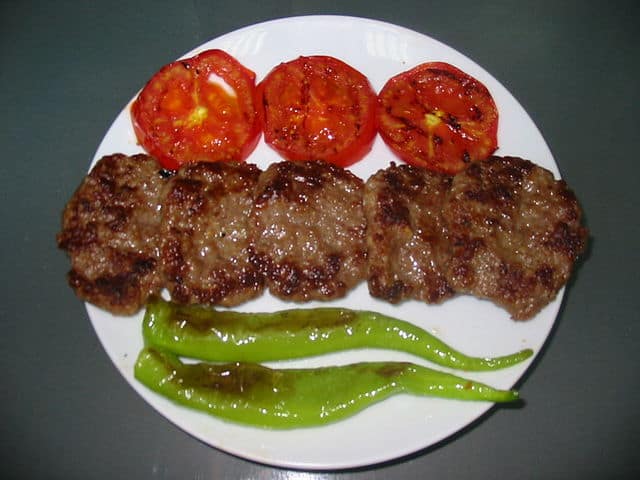
This variant of Turkish köfte is what I believe to be the very first köfte I have ever had, and whose recipe is often shared among English-based blogs and websites. If I am not mistaken, this köfte is the number one köfte available in many touristic places, although the authenticity is not always guaranteed since the meat used in the real Akçaabat köftesi comes from the district with the same name in Trabzon. The meat is rested for 24 hours, all the muscles are removed and the bones are cleaned up. After that the meat is grounded and mixed with breadcrumbs, garlic, vegetable or olive oil, and salt. The mixture needs to be left for an hour, mixed again, shaped with the weight around 33 grams, and rested around 2 hours. After that, it is ready to be grilled over hot charcoal. Akçaabat köfte is served with roasted tomatoes, fries, chopped onion, sometimes also piyaz and bulgur.
Mercimekli Köfte
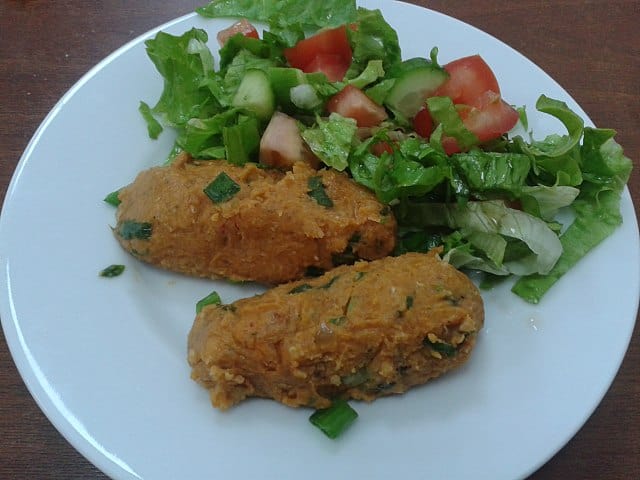
So far I have been mentioning only meat-based köftes with the exception of one variant of non-meat çiğ köfte which might come out as too spicy for some. My Turkish mother-in-law, for example, does not eat çiğ köfte at all because of that very same reason. So here is mercimekli köfte or red lentil köfte. Mercimekli köfte is the only köfte that has no meat at all, and is definitely suitable for vegetarian and vegan diets.
According to a Turkish newspaper, the origin of this köfte is Gaziantep. It is made of red lentil, bulgur, salça, scallion, onion, parsley, and spices like black pepper, chili flakes, and cumin. Mercimekli köfte is usually eaten cold as a meze. Just like çiğ köfte, mercimekli köfte is usually served with lettuce and lemon, although some places also sell it plain without any garnishes. Mercimekli köfte tastes good either way it is served.
Besides five köftes I have explained, there are many more kinds of köftes all around Turkey such as Tekirdağ köftesi, sulu köfte, satır köfte, Salihli odun köftesi, kadınbudu köfte, Izmir köfte, cızbız köfte, kasap köfte, tükürük köftesi (this one means saliva köfte-yikes!), sucuk köfte, göce köftesi, Yalıköy Köftesi, Tire Köftesi, Adapazarı Islama Köftesi, and Sultanahmet köftesi and many more. Have fun tasting the Turkish Köfte and discovering the köfte heaven, Turkey!









